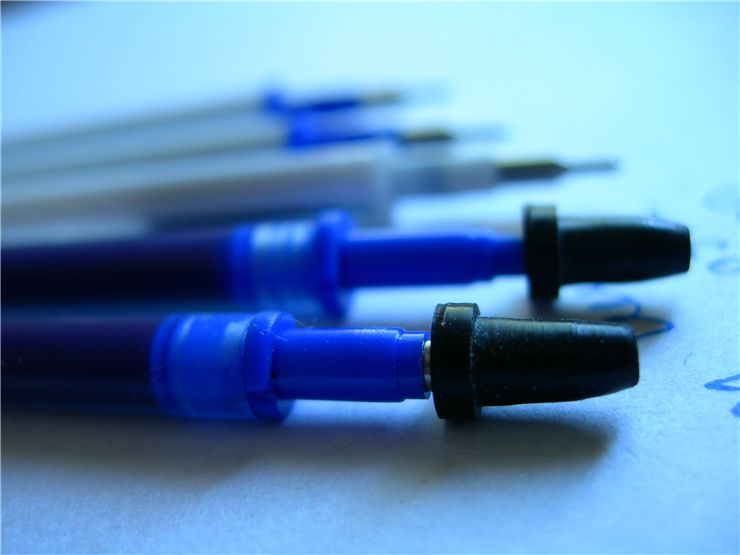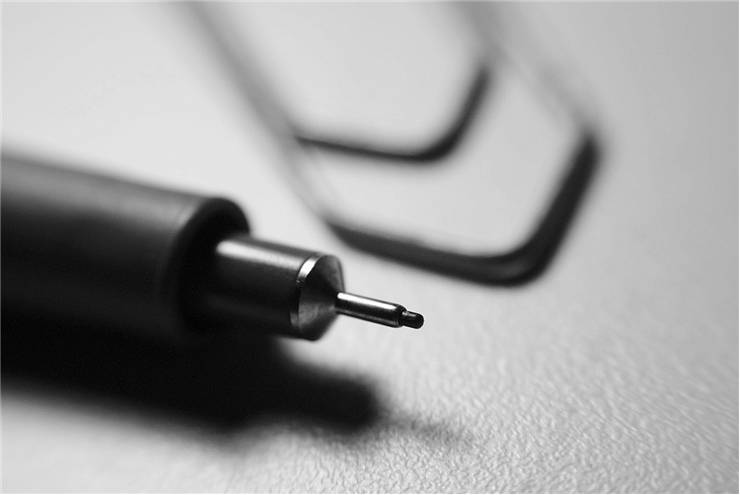History of Gel Pens
“Gel pen” is a type of ballpoint pen that uses pigmented water-based gel instead of ink. They are used for writing or illustration, leaving a much stronger mark on the surface than pens that use ink.
Sakura Color Products Corporation of Osaka, Japan, was the first to manufacture and sell gel pens in 1984. “Gelly Roll” was one of the first gel pens that Sakura introduced to the American market in the late 1980s; after that, Crayola sold gel pens with larger bodies aimed at kids. These gel pens wrote in fluorescent colors and with metallic sparkles. Graphic artists and architects especially love gel pens because they have control of ballpoint pens and strong colors. Gel pens allow for smooth writing and drawing, and its tip doesn’t wear down like felt-tip markers, so the quality of their writing doesn’t change over time.
Pigments used in gel pens are usually copper phthalocyanine and iron oxides. These are mixed with water and biopolymers (like xanthan gum and tragacanth gum) and with some polyacrylate thickeners. Gel made like this is thicker than ink and, because of that, gives stronger color. Pigments mixed are of bright and pastel colors, opalescent, metallic, and glittery, and can be used on darker surfaces and still be seen.
Compared to other types of pens, gel pens are better in some aspects and worse in others. Compared to standard ballpoint pens, gel pens make a bolder line and can write on smooth, non-absorbent materials. They also need more time to dry on the surface so they can smudge more, skip while writing because their ball can be less evenly coated with ink, use more ink to last shorter, and leak out when a fluid that stops the gel from leaking evaporates. Compared to fountain pens, gel pens are less likely to bleed through the paper on which they write, the lines they write are finer than those that a fountain pen writes, and gel pens can write on dark surfaces and smooth materials. Gel pens are also much smaller and easier to use than paint markers, they don’t have such a strong smell as them, and they don’t require shaking to work properly (paint markers have a metal or glass weight which moves when the marker is shaken to mix pigment with solvent and give a consistent color).
As we said, gel pens come in any different colors. Some of them are: “Regular Gel Pens,” which come in 11 transparent colors and white (which is not a color :) ) with medium and fine-point tips, and they work well on standard white paper; “Metallic” comes in 14 hues of opaque gel inks with metallic shine and you can write with them on both light and dark paper; “Moonlight” glows under black light, has ten shades and has opaque ink for writing on white or black paper; “Silver Shadow” also have metallic silver inks but these create a colored border while writing, and these borders come in 5 different ink colors; “Stardust Glitter Pens” have, as their name says, glitter in their gel, come in 24 colors and are best seen in light as they sparkle. For instance, Sakura’s Gelly Rolls come in 65 colors.
As for maintenance, gel pens don’t ask for much. They must always be capped when unused because they dry quickly and even faster than ballpoint pens. They can be stored in any position (not just pointed down as ballpoint pens and some markers), but they should not be doped because that can create a “bubble of vacuum” in the pen known as a “gel drop” and stop working.


